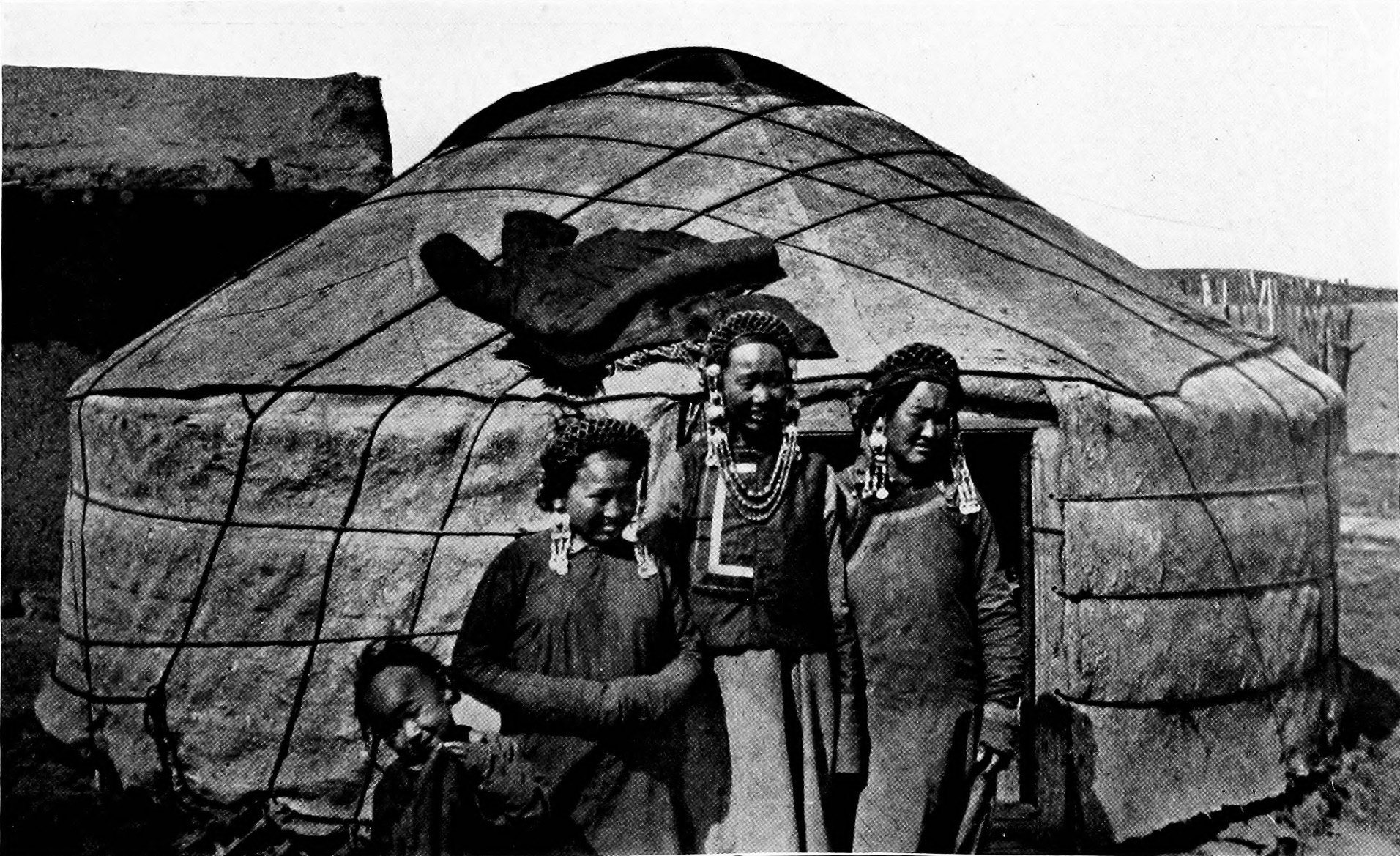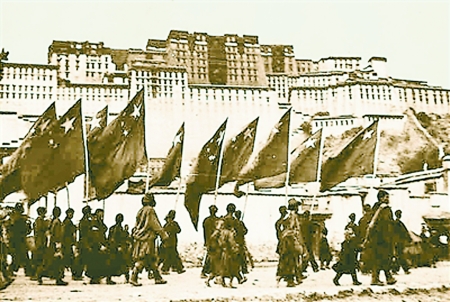|
Autonomous Regions Of China
The autonomous regions ( zh, s=自治区, p=Zìzhìqū) are one of four types of province-level divisions of China, province-level divisions of the People's Republic of China. Like provinces of China, Chinese provinces, an autonomous region has its own local government, but under the law of the People's Republic of China, an autonomous region has more legislative rights, such as the right to "formulate self-government regulations and other separate regulations." An autonomous region is the highest level of Autonomous administrative divisions of China, minority autonomous entity in China, which has a comparably higher population of a particular minority ethnic group. There are five autonomous regions in China: Guangxi, Inner Mongolia, Inner Mongolia (Nei Menggu), Ningxia, Tibet Autonomous Region, Tibet (Xizang), and Xinjiang. History Established in 1947, the Inner Mongolia, Inner Mongolia Autonomous Region became the first autonomous region in the Communist-controlled China ... [...More Info...] [...Related Items...] OR: [Wikipedia] [Google] [Baidu] |
Guangxi
Guangxi,; officially the Guangxi Zhuang Autonomous Region, is an Autonomous regions of China, autonomous region of the China, People's Republic of China, located in South China and bordering Vietnam (Hà Giang Province, Hà Giang, Cao Bằng Province, Cao Bằng, Lạng Sơn Province, Lạng Sơn, and Quảng Ninh Provinces) and the Gulf of Tonkin. Formerly a Provinces of China, province, Guangxi became an autonomous region in 1958. Its current capital is Nanning. Guangxi's location, in mountainous terrain in the far south of China, has placed it on the frontier of Chinese civilization throughout much of History of China, Chinese history. The current name "Guang" means "expanse" and has been associated with the region since the creation of Guang Prefecture in 226 AD. It was given Administrative divisions of the Yuan dynasty, provincial level status during the Yuan dynasty, but even into the 20th century, it was considered an open, wild territory. The abbreviation of the regi ... [...More Info...] [...Related Items...] OR: [Wikipedia] [Google] [Baidu] |
Law Of The People's Republic Of China
The Law of the People's Republic of China, officially referred to as the socialist rule of law with Chinese characteristics, is the legal regime of China, with the separate legal traditions and systems of mainland China, Hong Kong, and Macau. China's legal system is largely a civil law system, although found its root in Great Qing Code and various historical system, largely reflecting the influence of continental European legal systems, especially the German civil law system in the 19th and early 20th centuries. Hong Kong and Macau, the two special administrative regions, although required to observe the constitution and the basic laws and the power of the National People's Congress, are able to largely maintain their legal systems from colonial times. Since the formation of the People's Republic of China in 1949, the country does not have judicial independence or judicial review as the courts do not have authority beyond what is granted to them by the National People's Cong ... [...More Info...] [...Related Items...] OR: [Wikipedia] [Google] [Baidu] |
SASM/GNC Romanization
The former State Administration of Surveying and Mapping, Geographical Names Committee and former Script Reform Committee of the People's Republic of China have adopted several romanizations for Chinese, Mongolian, Tibetan and Uyghur, officially known as pinyin, Pinyin#For other languages, Regulation of Phonetic Transcription in Hanyu Pinyin Letters of Place Names in Minority Nationality Languages and Orthography of Chinese Personal Name in Hanyu Pinyin Letters. These systems may be referred to as SASM/GNC/SRC transcriptions or SASM/GNC romanizations. These romanization systems have been used for foreign translations of Chinese personal names and toponyms since 1978.国务院批转《关于改用汉语拼音方案作为我国人名地名罗马字母拼写法的统一规范的报告》 All schemes except pinyin have a strict form and a broad form, where the broad form is used in general. In the case of pinyin, tone marks are omitted in practice. Chinese Hanyu Pinyin is use ... [...More Info...] [...Related Items...] OR: [Wikipedia] [Google] [Baidu] |
Cambridge University Press
Cambridge University Press was the university press of the University of Cambridge. Granted a letters patent by King Henry VIII in 1534, it was the oldest university press in the world. Cambridge University Press merged with Cambridge Assessment to form Cambridge University Press and Assessment under Queen Elizabeth II's approval in August 2021. With a global sales presence, publishing hubs, and offices in more than 40 countries, it published over 50,000 titles by authors from over 100 countries. Its publications include more than 420 academic journals, monographs, reference works, school and university textbooks, and English language teaching and learning publications. It also published Bibles, runs a bookshop in Cambridge, sells through Amazon, and has a conference venues business in Cambridge at the Pitt Building and the Sir Geoffrey Cass Sports and Social Centre. It also served as the King's Printer. Cambridge University Press, as part of the University of Cambridge, was a ... [...More Info...] [...Related Items...] OR: [Wikipedia] [Google] [Baidu] |
Public Good (economics)
In economics, a public good (also referred to as a social good or collective good)Oakland, W. H. (1987). Theory of public goods. In Handbook of public economics (Vol. 2, pp. 485–535). Elsevier. is a commodity, product or service that is both non-excludable and non-rivalrous and which is typically provided by a government and paid for through taxation. Use by one person neither prevents access by other people, nor does it reduce availability to others, so the good can be used simultaneously by more than one person. This is in contrast to a common good, such as wild fish stocks in the ocean, which is non-excludable but rivalrous to a certain degree. If too many fish were harvested, the stocks would deplete, limiting the access of fish for others. A public good must be valuable to more than one user, otherwise, its simultaneous availability to more than one person would be economically irrelevant. Capital goods may be used to produce public goods or services that are "...ty ... [...More Info...] [...Related Items...] OR: [Wikipedia] [Google] [Baidu] |
Dissolution Of The Soviet Union
The Soviet Union was formally dissolved as a sovereign state and subject of international law on 26 December 1991 by Declaration No. 142-N of the Soviet of the Republics of the Supreme Soviet of the Soviet Union. Declaration No. 142-Н of the Soviet of the Republics of the Supreme Soviet of the Soviet Union, formally establishing the dissolution of the Soviet Union as a state and subject of international law. It also brought an end to the Soviet Union's federal government and General Secretary (also President) Mikhail Gorbachev's effort to reform the Soviet political and economic system in an attempt to stop a period of political stalemate and economic backslide. The Soviet Union had experienced internal stagnation and ethnic separatism. Although highly centralized until its final years, the country was made up of 15 top-level republics that served as the homelands for different ethnicities. By late 1991, amid a catastrophic political crisis, with several republics al ... [...More Info...] [...Related Items...] OR: [Wikipedia] [Google] [Baidu] |
Chinese Civil War
The Chinese Civil War was fought between the Kuomintang-led Nationalist government, government of the Republic of China (1912–1949), Republic of China and the forces of the Chinese Communist Party (CCP). Armed conflict continued intermittently from 1 August 1927 until Communist victory resulted in their total control over mainland China on 7 December 1949. The war is generally divided into two phases with an interlude: from August 1927 to 1937, the First United Front alliance of the KMT and CCP collapsed during the Northern Expedition, and the Nationalists controlled most of China. From 1937 to 1945, hostilities were mostly put on hold as the Second United Front fought the Second Sino-Japanese War, Japanese invasion of China with eventual help from the Allies of World War II. However, armed clashes between the groups remained common. Exacerbating the divisions within China further was the formation of the Wang Jingwei regime, a Japan-sponsored puppet government led by Wang ... [...More Info...] [...Related Items...] OR: [Wikipedia] [Google] [Baidu] |
Mongols In China
Mongols in China, also known as Mongolian Chinese or Chinese Mongols, are ethnic Mongols who live in China. They are one of the List of ethnic groups in China#Ethnic groups recognized by the People's Republic of China, 56 ethnic groups recognized by the Chinese government. As of 2020, there are 6,290,204 Mongols in China, a 0.45% increase from the 2010 national census. Most of them live in Inner Mongolia, Northeast China, Xinjiang and Qinghai. The Mongol population in China is nearly twice as much as that of the sovereign state of Mongolia. Distribution The Mongols in China are divided between autonomous regions and provinces as follows: * 68.72%: Inner Mongolia Autonomous Region * 11.52%: Liaoning Province * 2.96%: Jilin Province * 2.92%: Hebei Province * 2.58%: Xinjiang Uyghur Autonomous Region * 2.43%: Heilongjiang Province * 1.48%: Qinghai Province * 1.41%: Henan Province * 5.98%: Rest of PRC Besides the Inner Mongolia autonomous region, there are other Mongol autonomo ... [...More Info...] [...Related Items...] OR: [Wikipedia] [Google] [Baidu] |
Han Chinese
The Han Chinese, alternatively the Han people, are an East Asian people, East Asian ethnic group native to Greater China. With a global population of over 1.4 billion, the Han Chinese are the list of contemporary ethnic groups, world's largest ethnic group, making up about 17.5% of the world population. The Han Chinese represent 91.11% of the population in China and 97% of the population in Taiwan. Han Chinese are also a significant Overseas Chinese, diasporic group in Southeast Asian countries such as Thailand, Malaysia, and Indonesia. In Singapore, people of Han Chinese or Chinese descent make up around 75% of the country's population. The Han Chinese have exerted a primary formative influence in the development and growth of Chinese civilization. Originating from Zhongyuan, the Han Chinese trace their ancestry to the Huaxia people, a confederation of agricultural tribes that lived along the middle and lower reaches of the Yellow River in the north central plains of Chin ... [...More Info...] [...Related Items...] OR: [Wikipedia] [Google] [Baidu] |
Hui People
The Hui people are an East Asian ethnoreligious group predominantly composed of Islam in China, Chinese-speaking adherents of Islam. They are distributed throughout China, mainly in the Northwest China, northwestern provinces and in the Zhongyuan region. According to the 2010 census, China is home to approximately 10.5 million Hui people. Outside China, the 170,000 Dungan people of Kazakhstan and Kyrgyzstan, the Panthays in Myanmar, and many of the Chin Haws in Thailand are also considered part of the Hui ethnicity. The Hui were referred to as Hanhui during the Qing dynasty to be distinguished from the Turkic peoples, Turkic Muslims, which were referred to as Chanhui. The Republic of China (1912–1949), Republic of China government also recognised the Hui as a branch of the Han Chinese rather than a separate ethnic group. In the National Assembly (Republic of China), National Assembly of the Republic of China, the Hui were referred to as 1947 Chinese National Assembly election ... [...More Info...] [...Related Items...] OR: [Wikipedia] [Google] [Baidu] |
Zhuang People
The Zhuang (; ; , , Sawndip: 佈獞) are a Tai-speaking ethnic group who mostly live in the Guangxi Zhuang Autonomous Region in Southern China. Some also live in the Yunnan, Guangdong, Guizhou, and Hunan provinces. They form one of the 56 ethnic groups officially recognized by the People's Republic of China. With the Bouyei, Nùng, Tày, and other Northern Tai speakers, they are sometimes known as the Rau or Rao people. Their population, estimated at 18 million people, makes them the largest minority in China. Etymology The Chinese character used for the Zhuang people has changed several times. Their autonym, "Cuengh" in Standard Zhuang, was originally written with the graphic pejorative , (or ''tóng'', referring to a variety of wild dog).漢典.獞. Chinese. Accessed 14 August 2011. 新华字典, via 中华昌龙网. 字典频道.". Chinese. Accessed 14 August 2011. Chinese characters typically combine a semantic element or radical and a phonetic element. John De ... [...More Info...] [...Related Items...] OR: [Wikipedia] [Google] [Baidu] |
Annexation Of Tibet By The People's Republic Of China
Tibet came under the control of China, People's Republic of China (PRC) after the Ganden Phodrang, Government of Tibet signed the Seventeen Point Agreement which the 14th Dalai Lama ratified on 24 October 1951, but later repudiated on the grounds that he had rendered his approval for the agreement under duress. This occurred after attempts by the Tibetan Government to gain diplomatic recognition, international recognition, efforts to modernize its Tibetan Army, military, negotiations between the Government of Tibet and the PRC, and Battle of Chamdo, a military conflict in the Chamdo area of western Kham in October 1950. The series of events came to be called the "Peaceful Liberation of Tibet" agreed by the government of China, Chinese government, the plenipotentiary of the Tibetan Local Government and the Dalai Lama despite several thousand casualties being reported by Chinese generals throughout the invasion, and the "Chinese invasion of Tibet" by the Central Tibetan Administr ... [...More Info...] [...Related Items...] OR: [Wikipedia] [Google] [Baidu] |










